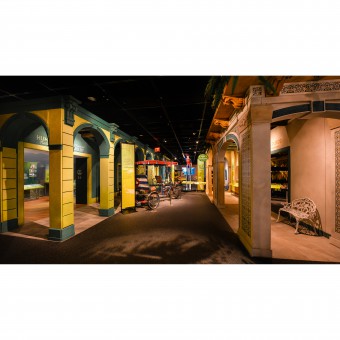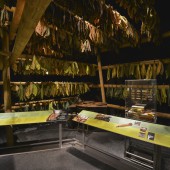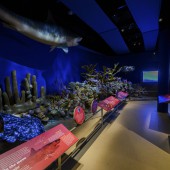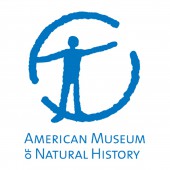Cuba Temporary Exhibition by AMNH 3D Design Team |
Home > Winners > #58221 |
 |
|
||||
| DESIGN DETAILS | |||||
| DESIGN NAME: Cuba PRIMARY FUNCTION: Temporary Exhibition INSPIRATION: From Christopher Columbus to the modern day controversy over Guantanamo Bay, the dynamic culture of Cuba has long attracted the attention of the rest of the world. The contrasts between its people, its landscape, and its rare and unusual species were all inspirations for the design of this immersive exhibition that explores Cuba and its diverse heritage. UNIQUE PROPERTIES / PROJECT DESCRIPTION: Cuba takes you inside the Cuban experience and explores the evolution of daily life in Cuba both inside some of its main cities and out on urban farms. The exhibition recreates Cuban environments and their biodiversity as they were when humans first arrived to provide a positive message of the potential for future conservation. Replicas of a Cuban coral reef, caves, and a Cuban avenue tie the exhibition together and bring a new perspective to this intriguing country. This is their first bilingual exhibition. OPERATION / FLOW / INTERACTION: Visitors enter the exhibition through a room covered in photographs and quotes detailing the lives of Cubans living both inside and outside of the country. Further within the exhibition they find a universal Cuban avenue. One side of the avenue displays the transformation of Cuban society through the years in the form of old American cars tobacco stands and Carnival costumes that depict Cuban economy and culture. The other side of the avenue displays the biodiversity of Cuba and how it has evolved since the first arrival of humans. PROJECT DURATION AND LOCATION: The project began in New York, New York in 2015. Production finished and the exhibition opened in November 2016 and will close in August 2017. From there Cuba will leave the American Museum of Natural History as a traveling exhibition. FITS BEST INTO CATEGORY: Interior Space and Exhibition Design |
PRODUCTION / REALIZATION TECHNOLOGY: The bold and bright colors present in Cuba can be found in the exhibition as well. Realistic caves and the animals that live and have lived in them were all created from scratch in house. Nearly all the pieces in the exhibition were fabricated at the Museum in order to bring the Cuban culture to life. There are realistic fruit carts on the Cuban avenue, full outdoor seating decorated with food and dominoes, and an interactive gallery of artwork from Cuban artists. SPECIFICATIONS / TECHNICAL PROPERTIES: 55 feet x 140 feet x 12 feet TAGS: Natural History, American Museum of Natural History, Exhibition, Museum, Cuba, Heritage, Culture, Biodiversity, Cuban Experience, Caves, Coral Reef, Wetlands, Art, Religion RESEARCH ABSTRACT: The Museum maintains a tradition of working with researchers and institutions in Cuba and the collections at the Museum are rich with Cuban specimens. Cuba is geographically remote as well as politically and economically isolated making it a source of priceless ecological and cultural information. This makes the island nation a perfect spot for the Museum to research and gave the design team high confidence in their plans for the exhibit. CHALLENGE: The primary challenge here was displaying Cuba in a way that would properly shed light on its history as it is the most poorly understood island in the Caribbean. By inviting a number of Cubans living inside and outside the country to share their stories and their views on life in Cuba today the Museum was able to show how changes in Cuban society have directly affected its people. ADDED DATE: 2017-06-05 15:30:56 TEAM MEMBERS (11) : Sr. VP, Exhibitions: David Harvey, Managing Sr. Dir.: Melissa Posen, Dir. Design, Exhibition Dept.: Michael Meister, Exhibit Designer: Lydia Romero, Lighting Designer: David Clinard, Dir. Graphic Design: Catherine Wiese, Dir. Media: Helene Alonso, Dir. Prod.: Dean Marksman, Sr. Dir. Editorial: Lauri Haulderman, Exhibition Fabricator: Heartland Scenic Studios and Graphics Prod.: Color Edge, AMNH Fabrication Team, AMNH Media Design Team, AMNH Graphics Design Team and AMNH Editorial Team IMAGE CREDITS: Image #1: Photographer Denis Finnin/Rod Mickens, 2016 Image #2: Photographer Denis Finnin/Rod Mickens, 2016 Image #3: Photographer Denis Finnin/Rod Mickens, 2016 Image #4: Photographer Denis Finnin/Rod Mickens, 2016 Image #5: Photographer Denis Finnin/Rod Mickens, 2016 PATENTS/COPYRIGHTS: Copyrights of text and images belong to the American Museum of Natural History, 2016. |
||||
| Visit the following page to learn more: http://www.amnh.org | |||||
| AWARD DETAILS | |
 |
Cuba Temporary Exhibition by Amnh 3d Design Team is Winner in Interior Space and Exhibition Design Category, 2017 - 2018.· Read the interview with designer AMNH 3D Design Team for design Cuba here.· Press Members: Login or Register to request an exclusive interview with AMNH 3D Design Team. · Click here to register inorder to view the profile and other works by AMNH 3D Design Team. |
| SOCIAL |
| + Add to Likes / Favorites | Send to My Email | Comment | Testimonials | View Press-Release | Press Kit |
Did you like Amnh 3d Design Team's Interior Design?
You will most likely enjoy other award winning interior design as well.
Click here to view more Award Winning Interior Design.








